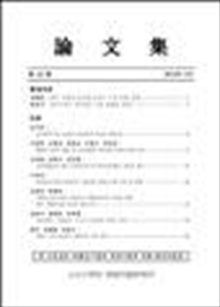간행물
大田大學校 環境問題硏究所 論文集 대전대학교 환경문제연구소 논문집 Journal of The Institute of Environmental Studies

- 발행기관 대전대학교 환경문제연구소
- 자료유형 학술지
- 간기 연간
- ISSN 2287-1527 (Print)
- 수록기간 1996 ~ 2016
- 주제분류 공학 > 환경공학 공학 분류의 다른 간행물
- 십진분류KDC 539DDC 628
권호리스트/논문검색
제12호 (2008년 2월) 6건
국내환경기사
1.
2008.02
구독 인증기관 무료, 개인회원 유료
4,000원
중국환경기사
2.
2008.02
구독 인증기관 무료, 개인회원 유료
Since the country was reformed and opened recently rapid economic development has attracted a lot of capital, technology and human resources the country,leading to a rapid pace of urbanization and population increase. The economic development and population increase also faced a tremendous urban environment all pressure. The quality decrease of the urban environment, especially that of the surface water has affected the normal life of residents. In this report we introduced the current Chinese situation of China’s environment.
4,000원
3.
2008.02
구독 인증기관 무료, 개인회원 유료
The detailed survey result estimate the contamination depth which executes the TPH(total petroleum hydrocarbon) soil detailed survey of analysis result is, about 0.25 ~ 3.0m the contamination area 836㎡, the contamination volume is 918.9㎥. But the tank bottom where the investigation is impossible and considering a circumference facility, the contamination soil will be able to increase. Consider the TPH(total petroleum hydrocarbon) concentration of analysis result, hereupon it will try to present the demobilization method which is suitable recommend Land Farming and Biopile.
4,600원
4.
2008.02
구독 인증기관 무료, 개인회원 유료
Characteristics of VOC(benzene) treatment were investigated using a fixed bed reactor system over copper base catalyst and photocatalyst/adsorbent blending material. The copper base catalysts were made by using copper nitrate reagent and various support materials such as γ-Al2O3, TiO2. The parametric tests were conducted at the reaction temperature range of 200~400℃, benzene concentration of 1,000~2,000 ppm, and space velocity range of 5,000~10,000 hr-1. The property analyses such as BET, SEM and the removal efficiency(conversion) of VOC were examined. The experimental results showed that the VOC removal efficiency of hybrid method was higher than that of single method. It was also found that the comprehensive feasibility study of hybrid method would need with considering various factors including additional expenses.
4,500원
5.
2008.02
구독 인증기관 무료, 개인회원 유료
The average BOD concentration was found to be about 269mg/L before a process innovation, but after the innovation, it became 30mg/L, which satisfied the effluent standard of 120mg/L. The removal effluent standard of 120mg/L. The removal efficiency was about 60~80%, and the concentration of the treated water was found th be low. after the process innovation, the average COD concentration was 29mg/L, and the CODmn removal efficiency became low to the level of about 65~76%, which was found lower than the effluent standard of 130mg/L.
After the process innovation the SS average concentration of the treated water was 13mg/L, which was lower than that before the innovation (32mg/L). By the activated sludge process innovation, the SS removal efficiency was improved to be 30~70%. The average concentration of total coliform before the process innovation was 6100 count/mL because an Activated sludge process only occasionally pass over the allowed standard(The average number of the total coliform of Activated sludge process treated water was about 8100 count/mL), UV disinfection process was introduced. after the introduction, the average number of the total coliform was 1800 count/mL, which satisfied the allowed effluent standard of 3000 count/mL.
4,300원
6.
2008.02
구독 인증기관 무료, 개인회원 유료
This study is to evaluate control effects of separation wall by surveying water quality and sewer overflows during dry and wet periods in combined sewer and separated sewer systems. Ravine water from the combined Seokgyo outfall with the separation wall was separated about four times larger than sewage flow during dry periods. The water quality of the combined Seokgyo outfall with separation wall during dry periods is flow weighed average T-N 22mg/L, T-P 2.4mg/L, the combined Chenseokgyo outfall without the separation wall is average T-N 21mg/L, T-P 2.6mg/L, and the separated Pyoungsong center outfall is average T-N 12mg/L, T-P 1.0mg/L. The T-N, T-P concentration in separated outfall make form about 44%, 42% of the combined outfall, and this means the separated outfall (i.e. storm sewer) is polluted by inflow of sewage. The overflow load of the separated outfall is ten times higher than the combined outfall and its overflow load per rainfall is three times than combined outfall during the wet periods. Therefore, the control plan of overflow load is required in storm sewer. The control effects of the overflow load increased 100% by setting the separation wall in the combined sewer, and showed 44% increase without the separation wall in separated sewer, but forecasted over than 82% increase of effects with the separation wall.
5,400원

